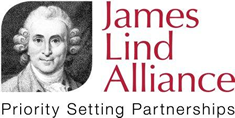Translating Research Priorities into Funded Research: A quantitative analysis of James Lind Alliance Top 10s
Published: 11 January 2023
To introduce myself, my name is Madeline Tatum and I am a recent MSc graduate of Translational Health Sciences from the University of Oxford. For my dissertation, I was eager to partner with a UK-based organization; however, as an American citizen, I did not know which organization would be best. I was originally introduced to the work of the James Lind Alliance by my incredibly supportive and knowledgeable supervisor, Dr. Joanna Crocker. She previously worked with the group on her project, Prioritising Health Research.
I was amazed by the Priority Setting Partnership (PSP) process and was eager to assist the JLA in any way that was practical and useful for the organization. In discussions with the JLA Coordinating team, it was determined that a quantitative analysis focusing on the translational success of Top 10 priorities would be most helpful as one had not been completed previously.
Depending on one’s own familiarity with the JLA, that last sentence may make varying degrees of sense. For those who are less familiar, the JLA supports PSPs to create and publish Top 10 lists. A list will cover the ten most important questions the PSP feels needs to be addressed. After a list is published, the PSP promotes the list in order to attract funding and inspire action. For example, the NIHR may select a priority within a Top 10 list to develop into a commissioning brief. My dissertation looked at the success rate of this translation; how many priorities had associated funded research or other work (e.g., a commissioning brief) completed? In other words, did priorities have associated outcomes?
However, this project did not stop there. Beyond a simple “success rate” I wanted to examine what about the priority questions made them more likely to result in funded research or work. For example; Did the length of the question matter? Would a certain style of formatting (e.g., PICO) make the priority question more likely to be funded? These type of questions had been asked by the JLA Coordinating team for years; this was the first quantitative analysis to examine these associations.
As far as how it was completed, 525 priority questions were coded with characteristics (e.g., the number of words in the question) and associated translation (e.g., NIHR-funded research), per information available on the JLA’s website. Statistically significant associations were determined through the data package SPSS.
As far as the results of this study, there were several statistically significant associations found between priority questions and funded research. In terms of basic statistics, there was an average of 21 words per Top 10 priority question, with 92.6% of priorities only having one question in the priority. In short, shorter more concise sentences were shown to have a positive statistically significant associations with translational success. Other findings of the study showed that the ranking of the list (i.e., having a higher ranking was better) and the presence of PICO formatting were both shown to have statistically significant associations with funding. On another note, this study examined whether certain HRCS Health Categories or Research Activities made the priority more likely to result in funding; results varied across categories. For a complete picture, look to the Executive Summary linked below. Lastly, overall, 45% of JLA Top 10 priorities were shown to have some translational action taken after publication.
It is important to highlight that there were limitations of this study. For one, there were tight limitations on this project, given that it was a dissertation completed within the 12-months of the degree program; analyses had to be constrained to those that were thought to be most consequential to translational success. Also, though it is not a limitation per se, this study was designed to be a quantitative analysis, not a qualitative analysis. While it would be helpful to have the stories behind the numbers alongside the data, this was not the aim of this study. With that said, these results should be considered in conjunction with anecdotal knowledge and previously published qualitative studies. Lastly, the translation outcomes gathered by the JLA were very likely undercounted. To explain, the JLA Coordinating team is reliant on previous PSPs to communicate back translational results; this information is not always communicated back to the JLA. Therefore, actual translational outcomes are likely higher.
To learn a bit more about this study, please read the Executive Summary
Alternatively, please reach out to me (Madeline Tatum) directly at madeline.e.tatum@gmail.com.
An enormous thank you to those who supported and aided this project: Dr. Joanna Crocker (supervisor), Caroline Whiting, Beccy Maeso, Margaret Ogden, Dorcus Muchiri, Mark Taylor, Femke van den Bos, and Klaudia Wojciechowska.
